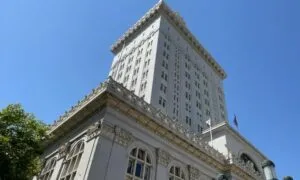Illegal surveillance has a way of drying up sources faster than any editorial misstep ever could. In the UK, investigative reporters have been living with the aftershocks of covert monitoring for years.
Now they are fighting back with lawsuits, new safeguards in law, union pressure, and hardened newsroom practices.
Today, we prepared a detailed look at how that fight is unfolding, what’s changed since 2016, and how journalists themselves are protecting the public’s right to know. Let’s get started.
Table of Contents
ToggleKey Points
- UK journalists are using lawsuits, new safeguards in law, and tougher newsroom practices to push back against illegal surveillance.
- Recent legal changes like the 2024 Investigatory Powers Amendment Act strengthened protections for confidential journalistic material.
- Oversight bodies and tribunal cases (IPCO reports, IPT rulings) are now central tools for accountability and transparency.
- Reporters are adopting layered security habits, from segregated devices to legal drills, to keep sources safe.
The Legal Landscape After 2016

The surveillance fight in the UK shifted after 2016, when lawmakers pulled together sprawling powers under one framework.
That moment reshaped how journalists, unions, and watchdogs approach privacy, oversight, and source protection today.
As oversight tightened after 2016, journalists started pairing legal rights with privacy-focused services like eSIM Plus to shield their sources.
The Investigatory Powers Act 2016
The Investigatory Powers Act consolidated a sprawling set of surveillance laws and introduced judicial commissioners to sign off on some operations.
For journalists, the law’s most important feature was the creation of special approval tests when authorities sought communications data that could identify a source.
The 2024 Amendment and New Safeguards
Parliament passed the Investigatory Powers Amendment Act in 2024, adjusting several regimes and specifically referencing safeguards around confidential journalistic material in bulk powers. The Commons debate from February 2024 acknowledged that bulk equipment interference and related operations needed stronger protections.
Liberty announced a major victory for press freedom when the government agreed to independent authorisation before accessing confidential journalistic material through mass hacking or interception. The NUJ echoed the same in its own statement.
Codes of Practice
The Home Office updated its communications data code of practice in 2025 to integrate the new safeguards.
It explains in practical terms how authorities must apply special approval tests for source-identifying data.
For journalists, the code is a ready-made citation when pushing back against overbroad requests.
What the Numbers Show

The Investigatory Powers Commissioner’s Office (IPCO) publishes annual reports showing the scale of surveillance powers in the UK.
The headline numbers run into hundreds of thousands of communications data operations per year.
Only a fraction involves journalists, but the numbers are large enough to make mistakes inevitable.
Journalists, unions, and NGOs have started treating IPCO’s data as a goldmine.
They parse the figures to see how often authorities request data that could expose sources, how many times judicial commissioners intervene, and how many errors or refusals occur.
This approach has made oversight reports a frontline tool, not a dusty annual ritual.
Using the Investigatory Powers Tribunal
The tribunal has become the go-to venue for reporters who suspect their communications were unlawfully accessed.
It’s where journalists challenge covert monitoring, seek disclosures, and push for accountability when other channels fall short.
Birney and McCaffrey
In December 2024, the tribunal ruled that PSNI and the Met had unlawfully surveilled the two reporters behind the documentary No Stone Unturned.
The decision underscored the high bar authorities must meet before touching material that could reveal sources.
Vincent Kearney
In September 2025, MI5 admitted at the tribunal that it had unlawfully obtained the communications data of former BBC journalist Vincent Kearney.
For many in the UK press, this rare admission was a signal that persistent legal pressure works.
Historical Revelations from Inquiries
The Undercover Policing Inquiry, established in 2015, continues to release evidence about political and social surveillance dating back to 1968, including material involving journalists and media contacts. This ongoing inquiry reinforces why strong safeguards remain essential.
The PSNI also produced a report to the Northern Ireland Policing Board outlining how it intends to comply with covert powers rules in light of the Birney and McCaffrey ruling. Such internal reviews provide leverage for unions and lawyers pressing for change.
The Layered Playbook Journalists Use
Journalists in the UK are no longer relying on a single tactic to defend their work. Under the banner of press freedom, they’ve built a layered playbook that mixes legal action, policy reform, oversight pressure, and day-to-day security habits inside newsrooms.
1. Litigation and Strategic Cases
- Going to the IPT: Reporters use the tribunal to challenge improper authorisations, demand records, and obtain declarations or damages.
- Partnering with Civil Society: Liberty’s litigation programme targeted bulk powers that put source confidentiality at risk, leading to government concessions.
- Leveraging European Case Law: The Big Brother Watch ruling in Strasbourg set a stronger Article 10 baseline that UK authorities must respect.
2. Forcing Policy Change
- Statutory Changes: The 2024 amendment act added explicit safeguards for confidential journalistic material.
- Binding Codes of Practice: The 2025 code sets practical processes for when judicial commissioners must sign off on source-related communications data requests.
- Union Pressure: The NUJ pushed for stronger protections and documented the government’s 2024 commitments.
3. Mining Oversight Data
- IPCO Reports: Journalists analyse annual reports to identify trends, refusals, and errors.
- FOI Pressure: Public records requests have historically forced police to disclose surveillance tactics, leading to reforms.
4. Hardening Newsroom Operations
- Segregated Devices: Using separate phones or laptops for high-risk investigations.
- Stricter Source Handling: Keeping identifying details off cloud systems and limiting digital footprints.
- Safer Contact Channels: Encouraging in-person meetings or vetted secure channels.
- Legal Drills: Establishing internal protocols for police requests, device seizures, and emergency counsel access.
Timeline of Change
| Year | Trigger or Decision | What Moved | Why It Mattered |
|---|---|---|---|
| 2014–2015 | Public outcry over police use of RIPA to grab journalists’ communications data | Investigations and early policy signals | Put source protection at the center of surveillance reform debates |
| 2016 | Investigatory Powers Act enacted | Judicial commissioners and specific safeguards for journalistic sources | Created legal hooks for stricter authorisation and oversight |
| 2018–2021 | ECHR litigation culminates in 2021 ruling | Clear Strasbourg standard on bulk interception and journalists’ rights | Forced the UK to revisit safeguards |
| 2022–2023 | IPCO reports spotlight high use of powers | Growing transparency and debate on numbers | Journalists cite the data to push for stronger controls |
| 2024 | Investigatory Powers Amendment Act passed after legal pressure | Stronger safeguards around bulk powers and confidential journalistic material | Civil society litigation plus union advocacy delivers gains |
| Dec 2024 | IPT rules PSNI and Met spied unlawfully on Birney and McCaffrey | Damages and public censure | Reinforces that authorisations touching source material must meet strict tests |
| Jun 2025 | Home Office issues updated Communications Data Code of Practice | Operational clarity on journalistic safeguards | Gives watchdogs a concrete reference to enforce |
| Sep 2025 | MI5 admits at the IPT to unlawfully obtaining a BBC journalist’s data | Rare security-service admission | Gives newsrooms a fresh legal foothold to probe historical misuse |
Practical Steps for UK Journalists
Staying ahead of surveillance risks takes more than awareness. The following tips boil down the newest safeguards, lessons from recent cases, and day-to-day newsroom habits into a quick, usable toolkit for UK reporters.
Legal and Oversight Levers
- Move Fast on Suspected Surveillance: File a complaint with the IPT if you suspect source exposure.
- Ask Counsel to Seek Audit Trails: Request records of communications data requests touching your numbers or accounts.
- Cite Current Safeguards and Codes: Post-2024, bulk powers that could expose journalistic material face reinforced safeguards.
- Log Everything: Keep a dated record of suspicious events. Those details become crucial if you escalate.
Newsroom Security Habits
- Minimise Data Exhaust: Treat metadata like toxic waste. Use compartmented devices and minimal cloud storage for raw notes.
- Protect Source Pathways: Offer non-digital contact options or vetted secure channels.
- Plan for Seizures and Orders: Have a standing protocol for device seizures or access demands.
- Prepare for Cross-Border Travel: Use clean phones and travel accounts for overseas reporting.
External Support and Solidarity
- Engage the NUJ Early: The union has a long-running program on source protection and can coordinate legal and public advocacy.
- Use NGO Muscle Strategically: Groups like RSF and Liberty amplify cases, pressure regulators, and translate oversight reports into public narratives.
What Still Worries Press Freedom Groups
Even with stronger safeguards, some 2024 amendments lowered privacy protections in other areas, such as bulk personal datasets or telecoms obligations to inform the government about service changes affecting data access. Freedom House’s 2024 report on the UK flagged these concerns.
The sheer scale of communications data authorisations also matters. IPCO’s numbers show vast volumes of operations each year. While only a fraction touches journalists, the risk of errors or fishing expeditions is real.
Finally, the Undercover Policing Inquiry continues to unearth historical surveillance practices involving media and civil society. Press freedom advocates are watching closely to ensure lessons do not fade.
Policy to Newsroom

If you handle sensitive investigations today:
- Treat all communications data as risky.
- Do not rely on informal “off the record” agreements to keep a source safe.
- Get legal eyes on any outreach involving public authorities requesting data tied to your reporting.
- Cite the current code of practice and source-identification safeguards when pushing back.
If power knocks on your door:
- Ask for the legal basis in writing.
- Request confirmation on whether any authorisation involves identifying a journalistic source.
- Insist on independent approval where the law requires it.
- Move quickly to the IPT if something feels off.
If you need allies:
- Engage the NUJ at the first sign of trouble.
- Document everything and share timelines and device identifiers with counsel.
- Loop in groups like Liberty or RSF where strategic litigation or public pressure could tip outcomes.
The Bottom Line
UK journalists are clawing back ground through a mix of law, oversight, and operational craft. Stronger statutory safeguards for confidential journalistic material are in place, driven by litigation and public pressure.
Recent admissions and rulings confirm what many suspected: not every surveillance power was used lawfully, and some uses trampled on rights protected under Article 10.
The work is ongoing. Oversight data still shows heavy use of communications powers, and critics worry about parts of the 2024 changes that cut against privacy elsewhere.
The smart response is to keep using every available lever: litigate bad authorisations, cite the code and statute changes, push for transparent statistics, and keep newsroom security tight enough that sources stay protected.
By pairing legal action with disciplined operational security, journalists in the UK are showing that surveillance powers can be challenged, and that the right to report in the public interest is still worth fighting for.
Related Posts:
- Safest Countries in the World in 2025 - GPI…
- 26 Most Dangerous Cities in US - Updated Statistics for 2025
- America's Murder Capitals: A 2025 Ranking of the…
- The Hidden Boundaries of Free Speech in Modern Democracies
- What Is the Most Dangerous Country in the World in 2025
- What ICE Does and Why It Matters - U.S. Immigration…








